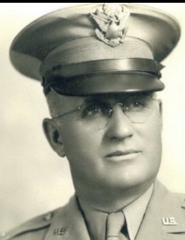Wrecked Gestapo Lair Discloses Nauseating Methods Used by Nazis
By Frank Miles
(Daily Time Herald War Correspondent)
Nurnberg, Germany (IDPA) ---Bodies of gestapo men smelled horribly here 10 days after the huge four-story structure had been made uninhabitable by American air bombs and artillery. Odor in tunnels, which extended throughout the city, was even worse. Evidence of the methods of the nazi gangsters likewise was nauseating.
On the desk of the former gestapo chief was a picture of Christ, surrounded by little boys and girls, with the words: "Mothers be warned for your children." Near it was a card, one of many of which were strewn over Germany, on which was a statement to the effect that neither Protestantism nor Catholicism, neither pastor nor priest was accepted by true Germans, only nazism and Adolf Hitler.
Photographs of German men and women whose only offense was opposition to the fuehrer were among those of criminals. Stacks of pamphlets described as "degeneracy" of Americans. Torture gadgets showed how suspects had been compelled to talk. Marks in chambers bespoke vicious practices used upon victims of gestapo wrath.
Underground passages enabled Hitler's spies to listen in and burst in they wished on thousands of families.
Near Nurnberg, largest industrial city in Bavaria, was found a building where all effects of American and British fliers shot down in Germany were processed. Discovery came through an American officer seeing a man from a displaced persons camp nearby wearing American articles, including a wrist watch and a fraternity pin. Baskets full of such things and thousands of dollars of American and British money were located. The files showed 10,360 Allied planes and 45,000 allied airmen had been brought to earth by ground guns. Some of the men are dead, other were prisoners.
"Air power was the Allies' deadly weapon." said the managing director of one of the big plants.
"Daylight bombing did most damage to material things; night bombing to the morale of the people."
"We thought of putting our factories underground but the nazi leaders pooh-poohed the idea that American could produce enough planes to hit Germany in force. They were grossly ignorant of American ability to manufacture and of how skillful American fliers would be in war."
Public relations headquarters of the Fifth army reports on these Iowans:
The Bronze star has been awarded to S/Sgt. Merle V. Westerly, Lucas; Cpl. Fred F Danay, Numa; Sgt. Richard B. Ballard, Reinbeck; Sgt. Wilfred J. Schrandt, Stacyville; Capt. Elmer G. Geronsin, Sibley; Pfc. Elmer A. Staffen, Dubuque; Cpl. Williard M. Freed, Fort Dodge; Cpl. Rollin S. Stiles, Cedar Falls; S/Sgt. Merle D. Meredith, Bonaparte; Pfc. Daniel Valadez, Des Moines; Pfc. Harold A. Shannon, Storm Lake; Sgt. George J. Brom, Calmar, and Sgt. Wilbur W. Kiewiet, Buffalo Center.
S/Sgt. Lawrence D. Wilson, Waterloo, of the 133rd infantry and Sgt. Arthur W. Beckjorden, Lake Mills, of the last field artillery battalion, have been awarded the 34th division citation for exceptionally meritorious conduct in the North African and Italian campaigns.
Sgt. Francis Finnegan, Guthrie Center, is in the 53rd signal battalion, which participated in five campaigns and was commended for superior performance of duty in North Africa, Sicily and the Fifth army front in Italy.
Source: Carroll Daily Times Herald, June 2, 1945
![]()

